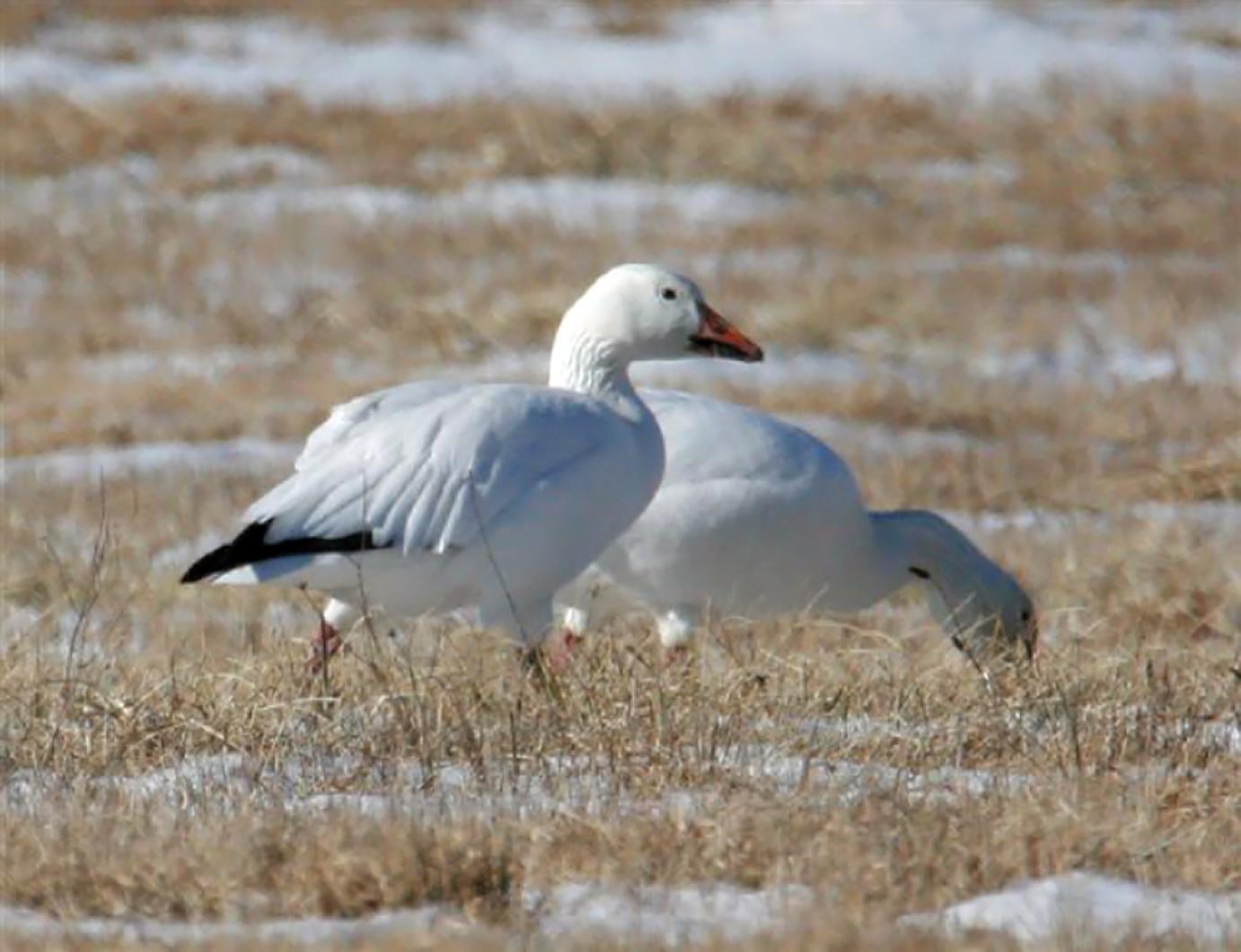The annual Christmas Bird Count was held on Saturday, Jan. 3, 2009. There was a tremendous effort from the 91 participants; 54 people were divided into 13 field teams, each with an assigned part of the Vineyard to cover and count all the birds that they could find, and 37 others counted the birds that came to their bird feeders.
And we did well, with the preliminary totals showing we found 119 species and a total of 79,919 birds. The final results may be slightly different as the results from each team is proofread and vetted. Nine additional species were found either three days before or three days after the count. This column will present the highlights of the count, and the final results for each species will be published in a future edition.
“We are definitely at the mercy of the weather, so let’s hope that Mother Nature is good to us.” So wrote Susan Whiting in last week’s column. How prophetic.
The weather that Mother Nature dealt us was decidedly mixed. We all experienced a sunny day with temperatures generally in the low 30s. We all had 2 to 4 inches of snow with some drifting, and we all had ponds that were partly to mostly frozen. These are pretty good conditions for finding and counting birds. But the winds we experienced varied greatly; those of us that were assigned to be birding on the southern or eastern parts of the Island had a pretty good day, with strong winds early in the morning but generally 15 to 20 miles per hour or less after 9 a.m. However, anyone who birded the north shore got hammered, with steady winds from 35 to 40 miles per hour blowing in from the northwest off Vineyard Sound, with gusts to 50 miles per hour. Susan Whiting and Flip Harrington were birding in Aquinnah, and they lamented that it was the coldest and most uncomfortable weather they had ever experienced on a count. These winds made it challenging to find birds anywhere near the north shore, and it definitely reduced the numbers of birds that were counted.
Several unusual species were found on this year’s count. Ten snow geese were found, including one dark morph that was formerly known as a blue goose. The last time a blue goose was found on a count was in 2001. Two rough-legged hawks were found and this species has not been observed on a count since 1994. Nine American pipits were found for only the second time in the past 10 years. Three Lapland longspurs were observed, for only the third sighting in the last 25 years.
High counts of individuals were recorded for four species. More than 52,000 common eiders were observed, up from the previous high of 49,000 individuals in 2002. Their distribution around the Island was unusual too — they were scarce almost everywhere except for one flock in excess of 50,000 individuals on one of the shoals in Vineyard Sound (imagine estimating the size of this flock while looking into the teeth of the strong northwest winds — brrrrr). The other interesting aspect of the eider count is that it follows three years of relatively low numbers for the Vineyard — less than 10,000 eiders were observed in each of the last three years. Razorbills were widespread around the perimeter of the Vineyard, with 561 individuals counted, up from the previous high of 382 in 2003. Tufted titmice continue their spread across the island, with 82 individuals counted, up from last year’s high of 55. And 90 red-winged blackbirds were found, up from the previous high of 72 recorded in 2004.
Since there are highlights, there also are lowlights. There are nine species that are here even though we could not find them on count day. These species become part of the official record since they were found during count week, which is three days before or after count day. They are: wood duck, redhead, Barrow’s goldeneye, greater yellowlegs, ruddy turnstone, black-headed gull, eastern phoebe, common grackle, and white-winged crossbill.
Three other species were not observed that were regularly observed until Dec. 20. The most notable of these species is the Wilson’s snipe, which is regularly found on the count and has been observed on every count since 1996. Two other species, northern shoveler and great egret, are not regularly found on the count but they were present in the late fall and were observed until Dec. 20; the ice and snow we had since then may have sent them southward to warmer areas.
Four other species are notable misses: northern bobwhite, American kestrel, Virginia rail and marsh wren. Bobwhites are scattered around the Vineyard in small numbers but are easy to find only in the spring and summer when they are frequently calling. Kestrels, the smallest falcon, used to be common in our open grassy areas. Both the rail and the wren are regularly present in fall migration but their preferred habitats are extremely limited on the Vineyard.
Do the missed species reflect declining populations rather than the vagaries of birding? Answering these questions is part of the reason why we go birding and why we have held the Christmas Bird Count every year since 1960.
Finally, I would like to thank everyone who participated. It is your participation that makes the count fun and very successful. We would have missed even more species if you had not been there to help.
Please report your bird sightings to the Martha’s Vineyard Bird Hotline at 508-627-4922 or e-mail birds@mvgazette.com.
Robert Culbert is the compiler for the Christmas Bird Count and an ecological consultant living in Vineyard Haven.





Comments
Comment policy »